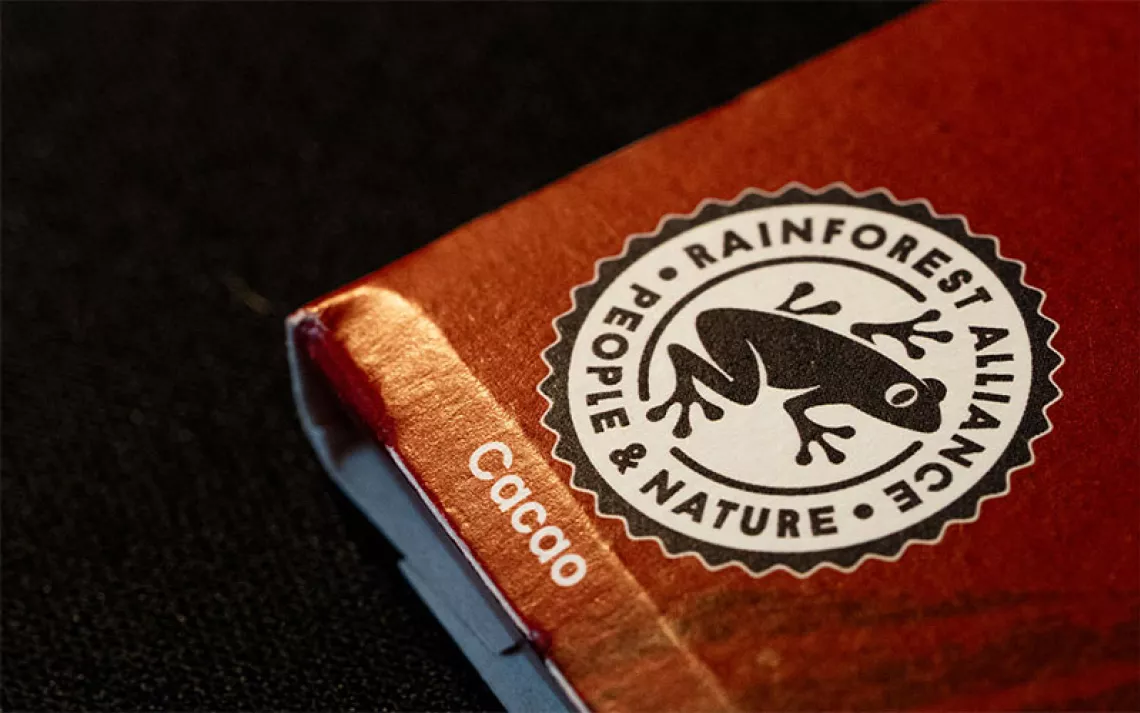Who Will Regulate Lab-Grown Meat?
It’s shaping up to be one juicy debate

Photos courtesy of Memphis Meats
Would you like your burger well-done, medium-rare, or fresh from the test tube?
A handful of start-ups are seeking to change the way the world consumes meat by creating burger and chicken-nugget-esque food products made via animal cells, genetic engineering techniques, and in vitro processes that, the companies claim, are less damaging to the environment than traditional farming. Typically referred to as “lab-grown” or “cell-cultured” meat, these foods typically start with cells extracted from a live animal, which are then developed into some kind of medium (often fetal bovine serum) in a bioreactor, and then scaffolded into a shape eaters might recognize from a backyard barbecue. While these buzz-worthy new products haven’t yet made it to market, the burgeoning “clean meat sector” has received millions of dollars in venture capital investments in the past year or so. And that has federal officials beginning to take notice of this nascent industry. In June, the House Research and Development Caucus held its first briefing on lab-grown meat.
The briefing partially served to address a budding federal agency turf war over the regulation of lab-grown meat. The Food and Drug Administration has announced its intention to place the lab-grown meat under its purview, arguing that it has jurisdiction over the regulation of all food, and that, well, lab-grown meat is food. On Thursday, July 12, the FDA plans to hold a public meeting “to help foster dialogue regarding these emerging food technologies.” Meanwhile, the US Department of Agriculture, which has handled all meat and poultry inspections since the 1940s, argues that any product marketed as “meat” is its responsibility.
The tug-of-war has lab-grown-meat entrepreneurs worried. Supporters of cell-cultured food products are generally opposed to regulation by the USDA, which they fear is overly influenced by ranchers, meat producers, and other “Big Animal Ag” interests. “There are winners and losers in any transition involving emerging technologies, and just like the coal industry dug in its heels to fight efforts to transition to clean energy, we’re seeing the animal agriculture industry digging in its heels to fight clean meat,” says Jonathan Lovvorn, senior VP of animal protection litigation for the Humane Society. “We have another new, clean form of tech potentially disrupting old, dirty tech and all its entrenched interests. And again, it begs the question of whether the government is going to embrace and subsidize this new tech or else thwart it.”
Kelsey Eberly, an attorney with the Animal Legal Defense Fund, believes the USDA is likely under tremendous pressure from the traditional meat industry to regulate lab-grown meat. She argues the FDA is better positioned to oversee the emerging technologies. “The FDA is charged with enforcing the Food Safety Modernization Act and so has its finger on the pulse of new food technologies as well as the expertise that would be brought to bear on safety regulation,” she says. “The USDA’s expertise has to do with the particular food safety risks that arise when animals are stunned and slaughtered and processed—really different risks than those that arise from the development of lab-cultured food products, which involves no antibiotics, or diseased bile, or hair or organs to detect.”
While President Trump has expressed a desire to move food-safety oversight out of the FDA altogether—a potential boon to Big Ag, given its long-standing influence with the USDA—the FDA and USDA are accustomed to overlap. After all, meat is food. Typically, they work things out via some memorandum of understanding. For example, while the FDA regulates shrimp and uncracked eggs, the USDA oversees catfish and processed egg products. But while the FDA shows every intention of making cultured meat its domain, lawmakers in the House have added language to a draft spending bill that would put the USDA squarely in charge of overseeing its manufacturing and labeling. Much of the regulatory controversy comes down to semantics: If we grow meat without the animal, can you still call it meat? Or is it something else altogether?
 “Our products look like meat, cook like meat, and taste like meat,” says Eric Schulze, VP of product and regulation at Memphis Meats, a lab-grown meat start-up based in the San Francisco Bay Area. A former FDA inspector and policymaker, Schulze declined to comment on his regulatory preference, stating, “Regardless of the agency of record and above all else, food must be safe to handle and consume.” But on another regulatory question facing his company, Schulze is perfectly clear: He is vehemently opposed to his company’s products being labeled as anything other than meat. “They’re fundamentally equivalent in identity, composition, and safety to the meat you can purchase right now. And since our products derive from the same animals you may already consume—the only difference being that we produce the muscle from animal cells rather than an entire animal—we believe our meat is meat.”
“Our products look like meat, cook like meat, and taste like meat,” says Eric Schulze, VP of product and regulation at Memphis Meats, a lab-grown meat start-up based in the San Francisco Bay Area. A former FDA inspector and policymaker, Schulze declined to comment on his regulatory preference, stating, “Regardless of the agency of record and above all else, food must be safe to handle and consume.” But on another regulatory question facing his company, Schulze is perfectly clear: He is vehemently opposed to his company’s products being labeled as anything other than meat. “They’re fundamentally equivalent in identity, composition, and safety to the meat you can purchase right now. And since our products derive from the same animals you may already consume—the only difference being that we produce the muscle from animal cells rather than an entire animal—we believe our meat is meat.”
In February, the U.S. Cattlemen’s Association submitted a petition to USDA that seeks to prevent plant-based and cell-cultured meat companies from using the words “beef” and “meat” on labels. “It’s why we’re worried the USDA would put onerous requirements on the labeling of such products, which could turn consumers off of them,” Eberly says. After all, she says, “lab-grown alternative protein product” doesn’t carry the same ring as “world’s first clean meatball.”
Lovvorn draws an analog to the long-standing controversy over genetically engineered food products. “GMOs got a bad rap early on, which really held that sector back,” he says. “If society and governments turn away from the clean meat the way people turned against GMOs, then regulation could really affect perception and acceptance of this new form of tech.” Eberly adds, “We really don’t know what’s best or what will be clearest for the consumer in terms of labeling at this point, but we know clean meat presents an enormous opportunity to deliver animal products without the terrible consequences of factory farming.”
 The traditional meat industry is well aware of how factory farming’s bad PR stands to affect meat companies’ bottom lines, and some meat giants are beginning to explore the lab-grown meat. Tyson Foods, for example, has invested in lab-cultured food products. “Traditional meat companies are hedging their bets and trying to grab a piece of the future,” Eberly says. Lovvorn adds that meat companies know that cultured meat technology has the potential to massively cut their need for water inputs, energy inputs, and pollution externalities, and mitigate their labor and animal welfare problems. “Imagine being able to tell your investors, ‘We’re phasing into something that’s going to resolve all the problems this company has been hearing about. It’s difficult to speculate on how this will ultimately shake out. All of the cultured meat leaders Sierra spoke with say they’re aware that regulatory clarity will take time and insist that their main concern is that their food is safe to handle and consume—no matter who deems it so.
The traditional meat industry is well aware of how factory farming’s bad PR stands to affect meat companies’ bottom lines, and some meat giants are beginning to explore the lab-grown meat. Tyson Foods, for example, has invested in lab-cultured food products. “Traditional meat companies are hedging their bets and trying to grab a piece of the future,” Eberly says. Lovvorn adds that meat companies know that cultured meat technology has the potential to massively cut their need for water inputs, energy inputs, and pollution externalities, and mitigate their labor and animal welfare problems. “Imagine being able to tell your investors, ‘We’re phasing into something that’s going to resolve all the problems this company has been hearing about. It’s difficult to speculate on how this will ultimately shake out. All of the cultured meat leaders Sierra spoke with say they’re aware that regulatory clarity will take time and insist that their main concern is that their food is safe to handle and consume—no matter who deems it so.
As of now, they and the handful of other U.S.-based cultured-meat companies are busy racing to get their products ready for supermarket shelves and restaurant menus. But since they’ll of course need some sort of agency approval beforehand to label their products, it’s the federal agencies’ regulatory race that we’ll be glued to.
 The Magazine of The Sierra Club
The Magazine of The Sierra Club



